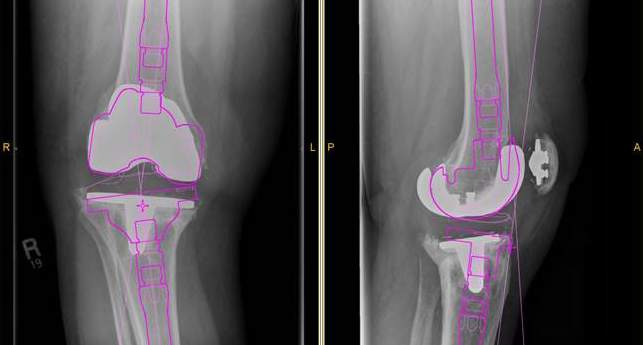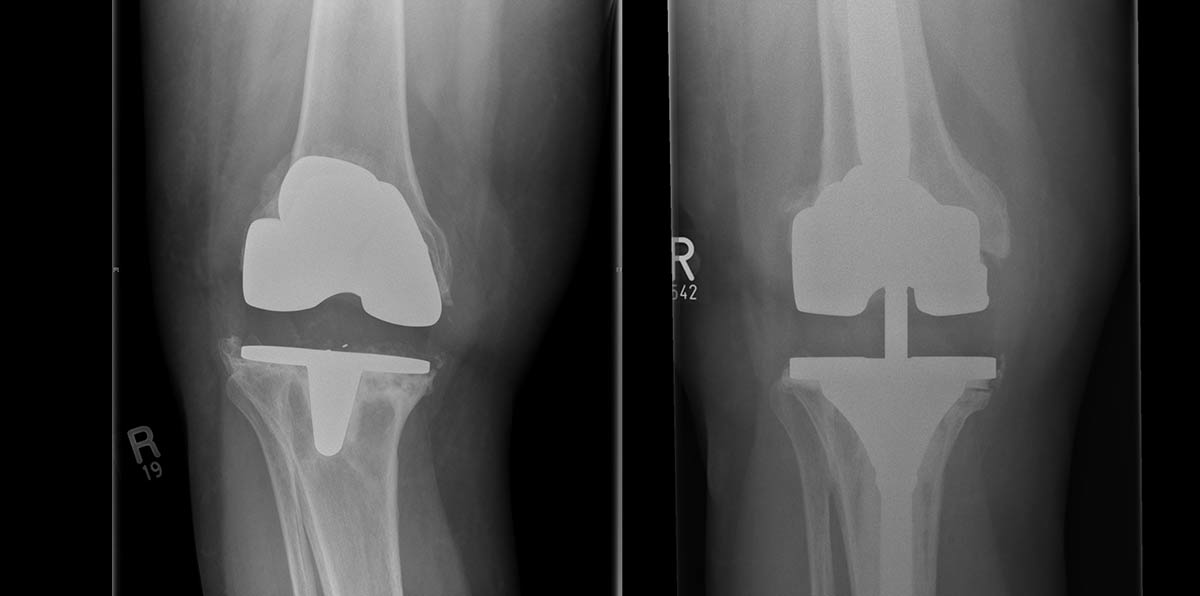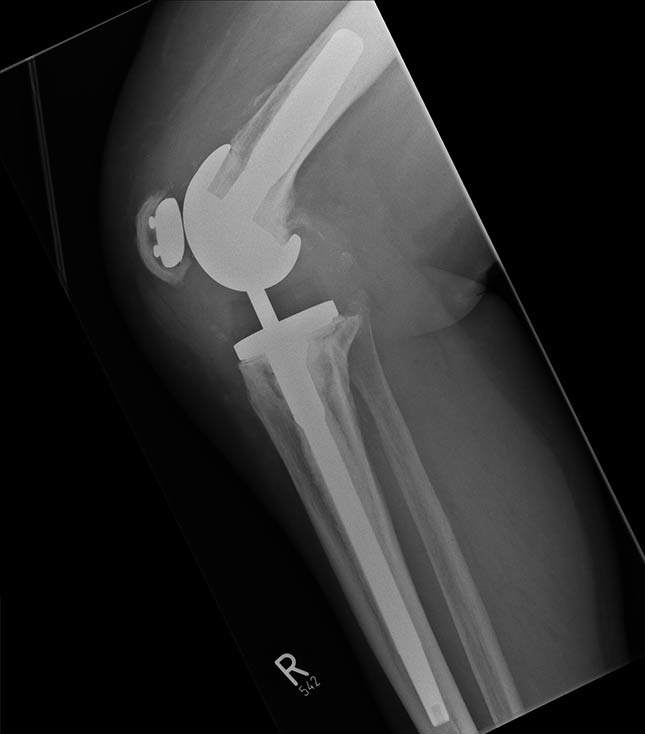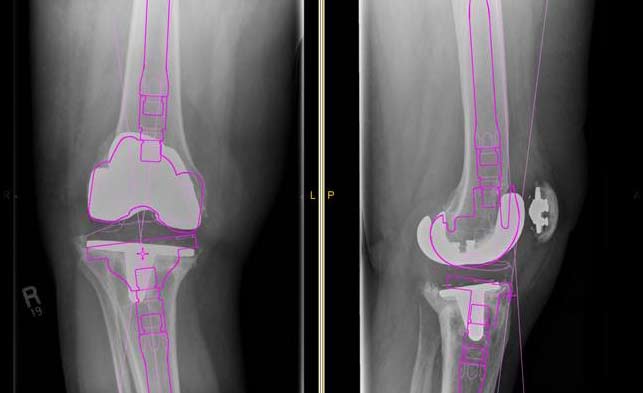Digital pre-operative planning allows the surgeon to easily assess the size of components required, as well as other factors that influence the duration of the procedure. Having considered a variety of options in advance of the procedure, the surgeon was able to ensure both the equipment and his staff were prepared, thus saving valuable time in the OR.
These are some of the time-saving questions that can be answered in advance of surgery with OrthoView:
- Will I need an offset stem in the OR?
- What thickness of wedges will be required?
- Which side will need to be built up?
- How can I communicate my requirements to the team in advance of surgery?
“When your x-rays are digital you need digital measuring and templating tools.”
– Grant Shaw, Consultant Orthopaedic Surgeon

A 70-year-old female, who had undergone a primary TKR 10 years previously, presented with a recent increase in pain and varus deformity. Imaging showed the patient had suffered a collapsed tibial plateau with a significant medial tibial loss. There is also evidence of posterior collapse. Osteolysis is visible in the lateral view.
A pre-operative plan was created using OrthoView’s digital tools the appropriate size of components prepared in advance. In this case, the use of a spinal anesthetic imposed a time limit of two-and-a-half hours on the procedure. Having a pre-operative plan enabled the surgeon to get to the final solution more quickly and be confident of keeping to this time limit.

A further benefit of having a digital pre-operative plan is being able to predict the component sizes and likely augments. This information can be usefully used by the scrub staff to organize the complex instrumentation, jigs, and trials used for revision knee surgery. They can often put half of the trays to one side which streamlines the whole procedure and is particularly helpful for staff under training.
The knee was revised using a Stryker Scorpio TS with non-offset stems. The preoperative planning helpfully showed that offset stems were not required which was quickly confirmed at the time of surgery and the procedure moved swiftly on to the next stage.


